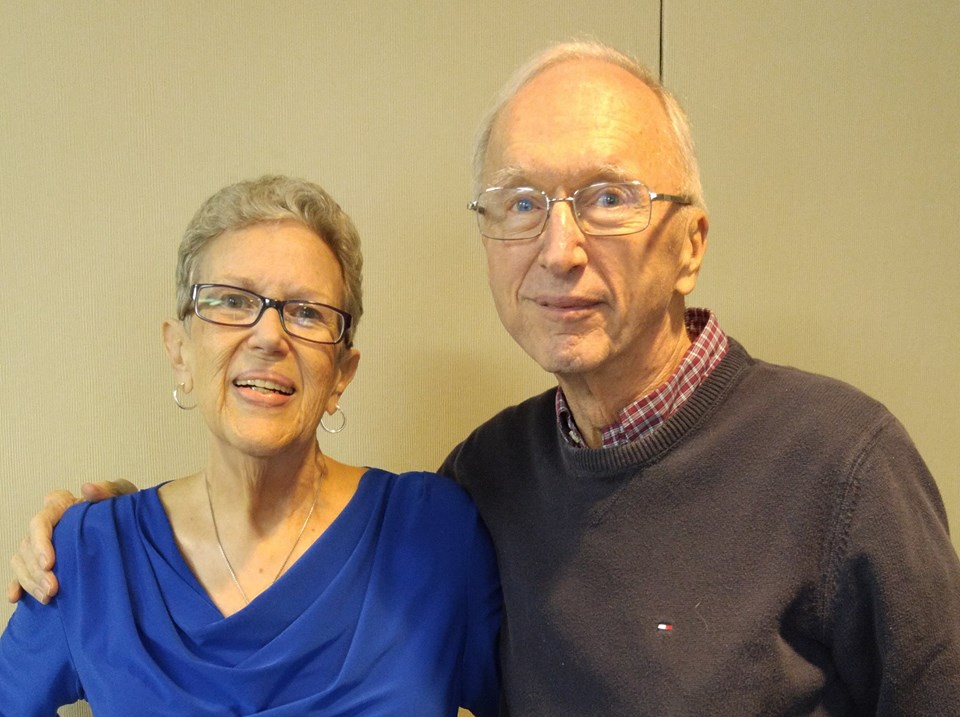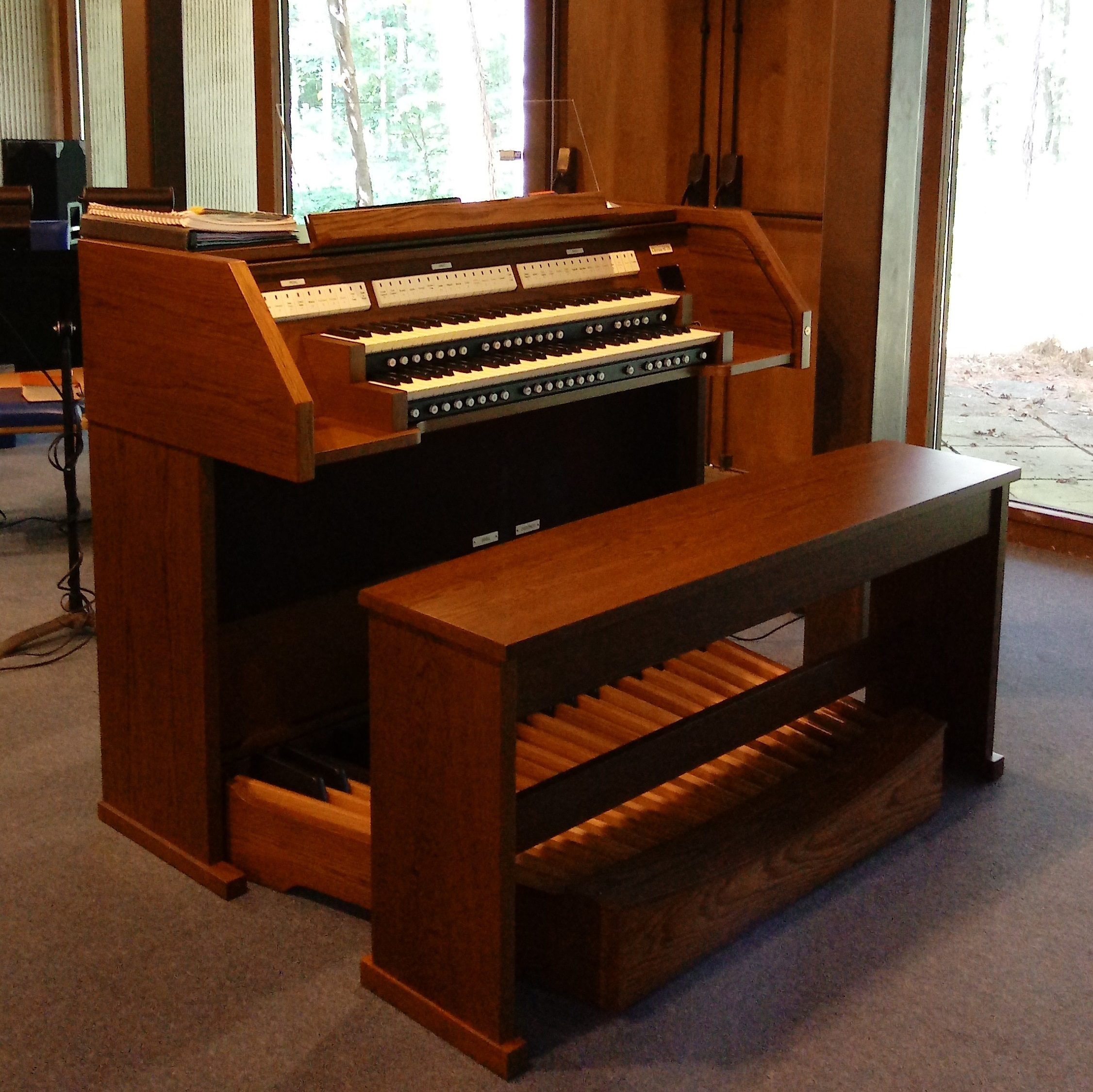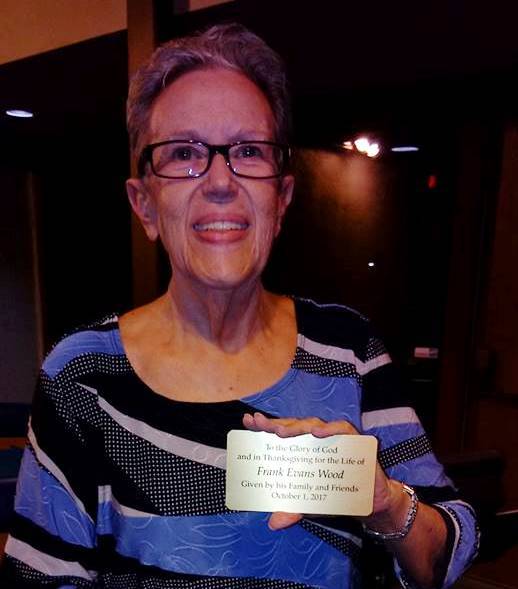Viscount Chorum 60 Organ At St. Bartholomew's Richmond
Viscount Chorum 60 DLX Organ
Four Major Schools Of Organ Building in One Machine
Viscount Chorum 60 Disposition.pdf
Until the Industrial Revolution and the advent of the telephone exchange system, the pipe organ remained the most complex machine invented by man. Its roots go back to the 3rd century in Greece, but really evolved into the instrument we recognize as the pipe organ in the 1600’s.
It is a machine that was designed to synthesize the tones of common instruments of the day in one unit that could be played by one operator. Its own unique voice is called the Diapason, or Principal, and was man’s early attempt to synthesize the sound of the human voice and voices joined together in an ensemble. It is no wonder that it eventually became the means to accompany singing in public gatherings – but it didn’t happen overnight.
Form always follows function and the development of the organ in Europe reflected the liturgical traditions it served in the Catholic - and later - Protestant services. By comparison, hymn singing – the organ’s primary role in modern worship – didn’t really evolve until the 1700’s. Even then, the organ played the hymn tune first and then the congregation sang the verse. They didn’t “sing” together until the 1800’s.
Schnitger Baroque Organ
In North Germany in the 1600’s, pipe organs were paid for by the aristocracy and featured a bold “in your face” sound that was designed to impress the listener with its many timbers of Principals, flutes, strings and imitative reeds. The organs built by Arp Schnitger weren’t designed to accompany singing and were not always installed in churches, so they could be as loud as the patron wanted or could afford. One-up-man-ship meant that organs tended to be larger and have more keyboards as they developed over the next hundred years.
We have a complete set of samples drawn from Schnitger organs that survived the bombing of WW2 in our new Viscount. Each pipe is recorded with modern equipment that can “hear” at a greater level of sensitivity than the human ear. These recordings are processed and played back by high-speed computers so that we can enjoy then at St. Bart’s today.
Silbermann Baroque Organ
Gottfried Silbermann was a contemporary of J. S. Bach in the 1700’s and built organs in the Saxony region of Germany where the devout Protestants raised the money for their purchase. His school of organ building was influenced by the French Classical organs and featured clear, silvery foundation tones and fiery French reed stops primarily with two manuals and pedalboard.
Only a handful still existed after WW2 and they remained behind the Iron Curtain until 1991. Our Viscount has a complete set of Silbermann samples of a 40 stop instrument that is considered “the Bach organ” by most organists today.
“Father” Henry Willis English Romantic Organ
Public electrical services and the invention of the telephone forever changed the organ. Organs could be built with virtually no limitations that prior generations faced when using totally mechanical control systems. The congregation owned the large Great Organ with its huge Diapasons and stately Trumpets while the Choir could have a smaller organ of their own placed right where they were seated and not be drowned out. The Queen could process into Westminster Cathedral to the blast of fanfare trumpets on the West End wall - and all of these “organs” could be played from one console placed in any convenient location.
Henry Willis was the first to embrace these new technologies and adopt them for use in the organ earning him the title “Father of the modern pipe organ”. Willis standardized all the controls so that an organist could go anywhere and immediately understand how to work the machine in the same way as we understand driving a Ford or a Chevy. This standard quickly spread to America and was adopted by the American Guild Of Organists and hasn’t changed in over 100 years.
The new technology also meant that the organ could be installed in cavernous public arenas and town halls that require massive amounts of sound to fill properly. The organ became the town’s orchestra, and playing transcriptions of current opera and orchestral pieces became the norm.
Our Viscount features samples from various English organs in this school as its primary voicing to support Anglican worship. Space and scale limit our organ to 45 ranks which you will find in typical parish churches in Great Brittan.
Cavaille-Coll French Romantic Organ
While Father Willis was standardizing the English organ, Aristide Cavaille-Coll was revolutionizing the sound of the organ making it more orchestral in nature. As his work progressed in the late 1800’s, his organs became both heavier and darker in tone.
As in England at the time, the organ moved out of the church and into concert halls. Composers who worked both in sacred and secular genres could conceive and transcribe their orchestral works for solo performance on the French Romantic organ and achieve the same tonal results while the machine physically supported the organist in playing these complex compositions.
Our French Romantic samples in the Viscount represent the core tonal structure of these organs as they existed in large Catholic churches and not so much those of the concert halls. It has always been said that the room is the best stop on the organ and a small space such as ours can never really communicate the power of the Cavaille-Coll cathedral organs.
The new organ at St. Bartholomew's Episcopal
was given by the family and friends of Frank Evans Wood
in hornor of his years of service to the church.






